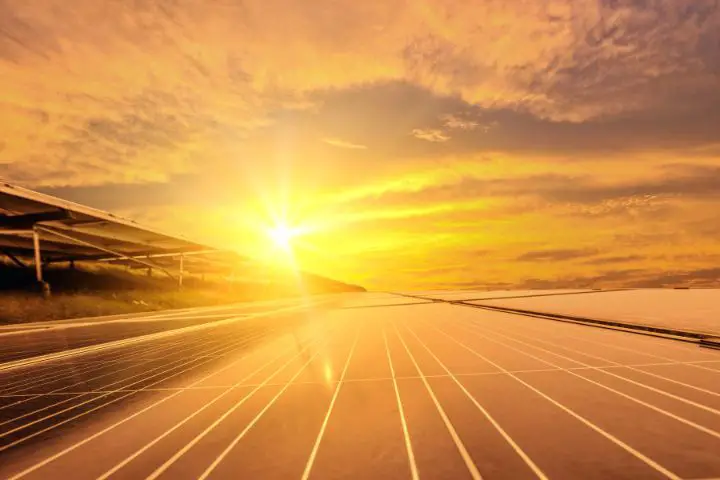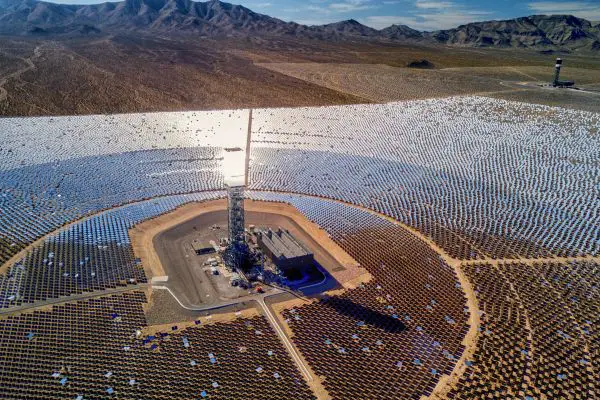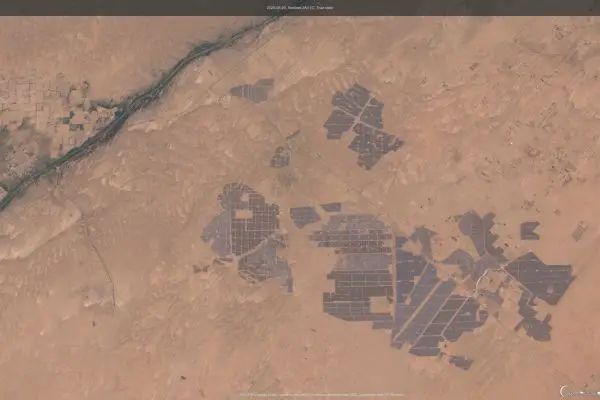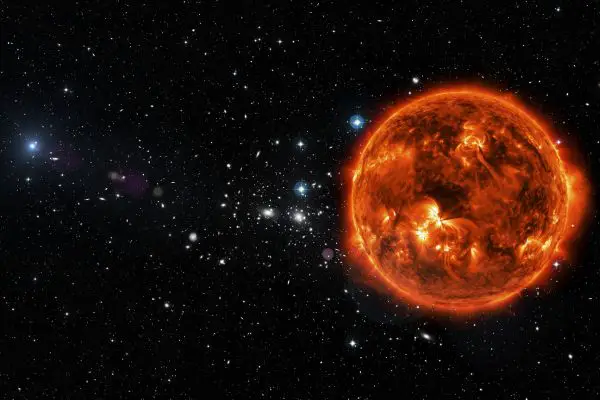17 Mind-Blowing Solar Power Facts That You Never Knew Before
As we move deeper into the 21st century, the future is getting more and more uncertain due to the effects of global warming. That makes renewable energy sources like solar power a crucial aspect of our lives in the coming days.
And among all the renewable sources, solar is one of the most reliable options for a cleaner future. In the words of Elon Musk, “We have this handy fusion reactor in the sky called the sun; you don’t have to do anything, it just works. It shows up every day.”
You might have installed solar panels over your rooftop, but solar isn’t just about wattage, cost-benefit analyses or the know-how of installation. Anything can be fun, and solar power is no exception. So here’s a bunch of mind-blowing facts you probably didn’t know! They may just come in handy to add some weight next time you rave to your friends (or kids!) about the importance of going solar.
Take a look.
17. Solar Energy Has Been Used for Centuries (And Even In Battles)

Solar panels might not be a very ancient invention. (Even if they’re definitely older than you think.) But people have always been aware of the simple wisdom – that the sun is hot. And when something’s hot, the wisdom goes on, you’d better find a way to put that heat to use.
And use it they did, and how cleverly! Solar energy was harnessed as early as the 7th century B.C. by using a magnifying glass to focus the sun’s rays. Another legend says that the Greek philosopher Archimedes used bronze shields to reflect and focus sunlight and set fire to Roman ships. This was in 212 B.C. during the siege of Syracuse by the Roman Republic.
Interestingly, the weapon is famously known as Archimedes’ death ray. Sounds like something right out of a comic book, right?
In fact, in 1975, a Greek scientist Dr. Ioannis Sakkas recreated the experiment with 60 Greek sailors holding mirrors. The experiment proved successful as they were able to set fire to a wooden ship 160 feet away.
16. It Took Time to Discover the First Solar Cell
While the phenomenon of the photovoltaic effect was discovered in 1829, the first solar cell was invented in April 1954, by researchers in the Bell Lab. Of course, this cell wasn’t anywhere near as powerful as to feed their clothes dryer, if they had one. The efficiency of these cells was a meager 6%, and they were used to power a small toy Ferris wheel and a radio transmitter.
These solar cells were expensive to manufacture and commercial use was not a success. However, in the next few years, solar cells were already used to power satellites.
15. A Single Day Can Power Us for Decades
“Every 24 hours, enough sunlight touches the Earth to provide energy for the entire planet for 24 years.” So goes the popular quote attributed to Martha Maeda.
Now, I don’t know what kind of authority lies behind this quote or its author, but there’s at least some truth to it.
If you don’t believe that, take a look at the numbers. Around 70 percent of solar energy reaching us is absorbed by the planet. That amounts to 3.85 million Exajoules in a year.

And 1 Exajoule has 18 zeros after the number one!
In other words, 430 quintillion Joules of energy hits the earth every hour. And considering the sun will last for another 5 billion years, we have an infinite source of green energy to harness.
However, finding the right technologies for harnessing and storing this energy in a cost-effective way is another story.
14. All Fuels Come From Solar Energy
In reality, solar energy is the driving power behind the generation of biomass on this planet. But what’s biomass, you may wonder? It’s the renewable organic material generated by plants and animals. In other words, if it lives and dies, it’s biomass. While plants survive the process of photosynthesis, animals depend on plants (or other animals that depend on plants) for food.
The biomass gets buried deep inside the soil and is broken down by chemical reactions over millions of years. Ultimately, these compounds are converted into fossil fuels that humans extract and use. These fossil fuels are burnt in power plants to generate electricity.
Here’s to hoping that we won’t have to burn fossil fuels for much longer. Still, the thought that even those villains of the industrial era wouldn’t have been possible without the sun’s energy does offer some food for thought!
13. The Percentage of Solar Use is Rather Low
Even with its infinite potential, only 3.4% of the utility-scale electricity generation in the US comes from solar. The total share of renewables is 21.5%. The major chunk of that comes from wind power resources, amounting to 10.2%.

And what about the global numbers?
On a global scale, 3.6% of the global electricity generation is from solar PV. Solar energy occupies the third spot among renewables, after hydropower and wind. China, the United States, and the European Union stand in the three top spots in solar power growth rate.
12. Solar Panels Can Perform Without Direct Sunlight
You may think solar panels need direct sunlight to generate electricity, but that is not the case. Even if sunlight is not falling directly on them or the sky is cloudy, the panels will keep generating electricity. However, they will work at a lower efficiency under such conditions.
With solar technology advancing at a fast rate, modern panels can perform even in indirect sunlight. The power production also depends on the inverter setup. When a microinverter system is used, shade on a single panel will have less effect on the total power generated.
11. Solar Panel Orientation is Different in the Two Hemispheres
One fun fact about solar power is the ”tilt” of the solar panels. If you consider a roof in the Northern Hemisphere, the southern side will receive the maximum sun rays all through the day. The north face will almost always be in the shade. So, the panels should face south to generate the maximum electricity.
However, in direction is the opposite in the Southern Hemisphere. Here, the panels should face north to make maximum use of the sun’s rays.
10. Solar Power Costs Have Fallen Sharply
In 1977, the costs of solar cell setups were around $77 per watt. But over the last four decades, the cost of PV modules has fallen by almost 99%. The period between 2010 and 2020 saw an 85% fall in prices.
One reason for this stunning drop is the favorable government policies. Other than that, technological improvements leading to the higher conversion efficiency of the panels and improvement in manufacturing methods also caused the price drop.
9. Solar is Much Cheaper than Fossil Fuels
It has been estimated that the cost of electricity from solar power projects is cheaper than the cheapest coal-fired power plants. The cost of solar power units can be as low as USD 0.03/kWh across the globe. These are some of the cheapest electricity generation rates the world has ever seen.
8. California is the Solar Leader in the US

With over 37 gigawatts of installed solar capacity as of 2022, California has the highest solar power generation rate among all the other states. The Golden State also has more than 2,000 operating solar companies that propel a robust solar market.
But what makes solar panels so popular in California?
The reason is the successful blend of abundant sunshine and favorable legislation and incentives for solar power. Moreover, electricity is expensive in the state, making solar power a cost-effective option for the residents.
7. The Future of Solar Energy Storage Is – Salty
Here’s one of the most interesting facts about solar power. In the future, you’ll be able to say goodbye to expensive lithium-ion batteries for storing solar energy. And the reason for that is molten salt storage solution.
In this process, solar energy heats up the molten salt solution which is stored in steel tanks. The hot salt solution is then passed through a heat exchanger to generate steam. The steam is used to run a turbine generator.
One of the companies that are working with this technology is Seaborg. As the cofounder of Seaborg put it: “If we filled up a building the size of the Colosseum in Rome with the salt and heated it to 700 degrees, we would actually be able to supply all of Italy’s entire population with heat and power for 10 hours,” he explains.
6. Solar-Powered Roads Can Be a Reality
Think of solar panels being infused into a city street. The power generated by the panels can be used for street lighting, melting snow, and also for traffic signaling. While that’s not possible right now, future developments in technology can make that a reality.
There have been projects in some countries like China and France that have used this technology on an experimental basis. However, solar roads are not economically viable at present, and the costs need to come down further to make them a more practical option.
Truth be told, electrified roads still have a long(ish) way to go to become mainstream. No matter the type of electrification! As of this writing, Sweden is the only country that has pinpointed a deadline for the world’s first permanently electrified road. Which WON’T be a solar road, by the way.
5. Ditto for Solar Powered Aircrafts
Aircrafts can be equipped with solar cells that can generate energy to power the electronics and propulsion systems. Researchers are working towards making these aircraft completely automatic and removing the pilot. One of the famous test flights was the Solar Impulse 2 which flew around 25,000 miles across four continents.
As we speak, Airbus is developing special solar cells that can power unmanned aerial vehicles in the stratosphere. It has already launched Zephyr, a High Altitude Platform Station that can fly in the stratosphere for months by relying on solar power.
4. Solar Panels Can Bump up Your Home’s Value
If you have installed solar panels and a solar battery system in your home, its value has automatically shot up by 3 to 4%. Some studies suggest that for each kilowatt of solar power, the increase in value can be around $5,900. In other words, a 10KW solar installation can boost the home value by $59,000.
Note, these are average numbers, and the actual increment will depend on the location of your home. The other factors that will influence the price are the size and output of the installation and the quality of the panels.
3. The World’s Largest Solar Park is in India

While China is the largest producer of solar energy in the world, the Bhadla Solar Park in India is the leading installation in terms of capacity. Spread across 14,000 acres, the plant generates 2,245 MW of electricity. The plant has led to the reduction of around 4 million tons of carbon dioxide emissions per year.
If it weren’t for the violent storms that result in layers of caked dust on the panels, the output would have been even more breathtaking.
2. Solar Panels Reduce CO2 Emissions More Than Forests
Research suggests that one acre of solar panels can prevent the generation of 121 to 138 metric tons of carbon dioxide annually. Likewise, an average 400W solar panel will offset 510 pounds of CO2 emissions in one year.
In comparison, the amount of CO2 sequestered by one acre of average forest in the US is 0.84 metric tons per year. That said, forests offer a diverse range of benefits that goes beyond carbon sequestration.
1. Solar Farms Can Be Set Up In Space

Solar power is being successfully farmed on Earth, by individuals and businesses alike.
If you’re thinking how much more efficient solar farming could be in space, closer to the sun, you’re not alone. Ever heard of project Cassiopeia? It has nothing to do with the constellation of that name. Honestly, among all the cool facts about solar energy, this one sounds most fascinating.
A constellation of space-based solar panels in the form of satellites can generate many times more power than those set up on the planet. Imagine satellites harvesting solar energy in space and beaming it down to Earth in the form of microwaves. Martin Soltau, the co-chairman at Space Energy Initiative (SEI) which is the driving force behind project Cassiopeia, says,’ “In theory it could supply all of the world’s energy in 2050.”
Technically, launching large-scale projects will need more time and budget. However, SEI hopes to attract private investments to develop the design of solar power satellites and robotics needed to launch pilot projects in the foreseeable future.






